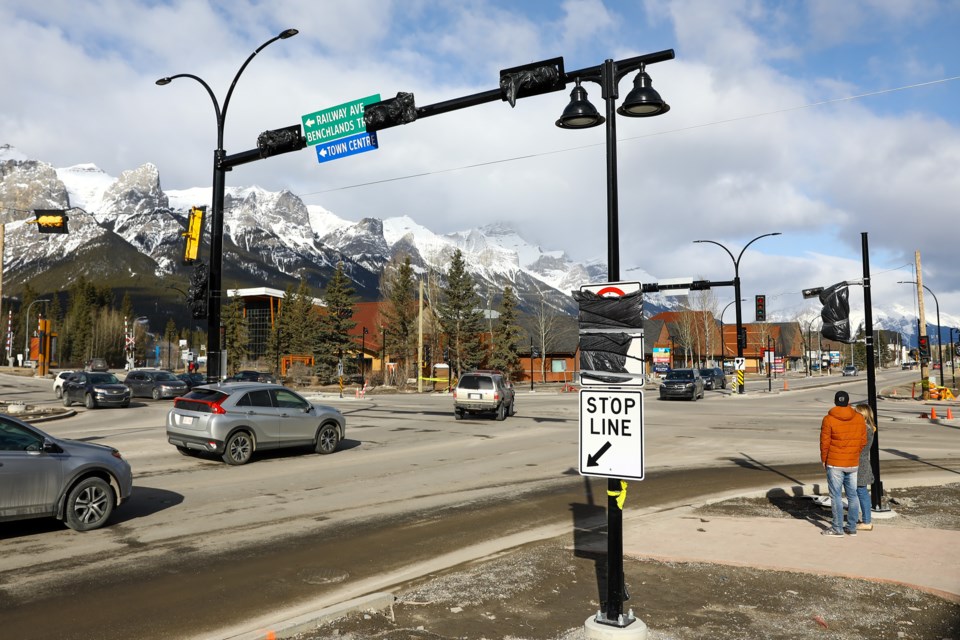CANMORE – Most construction projects bring with them temporary headaches for residents.
But the intent is to ultimately provide or replace safe and reliable infrastructure for the community for decades to come.
The ongoing controversial work at Bow Valley and Benchlands trails has been met with an abundance of concerns and complaints from Canmore residents. However, Town of Canmore officials say the work being done is aimed at providing infrastructure to align with municipal policy in providing safe and reliable modes of transit.
“What’s important is that we are providing people with viable travel options. Many do not have freedom of movement in that you’re generally provided an option to drive and perhaps some freedom to take some limited transit,” said Andy Esarte, the Town of Canmore’s manager of engineering. "What we’re trying to do is work towards the transportation system in Canmore where we have true freedom of mobility.”
In April, there was a pair of collisions involving a vehicle and a cyclist. While there were no serious injuries, it highlighted the potential of risk.
The Town’s TIP20 and Integrated Transportation Master Plan emphasize active modes of transit and public transit as part of the municipality’s commitment to reduce greenhouse gases.
The plans allowed the public to provide feedback before council approval.
The work establishes more connectivity for those active transit options that have already seen success in the Spring Creek Drive area.
Though frustrating at times, the work has seen Canmore be nationally recognized with its cycling infrastructure and connectivity.
The Outlook's 2019 Best of the Bow readers' choice award for best use of tax dollars in Canmore was the continuing work to incorporate dedicated bike lanes into the transit network.
The Town was also recognized nationally this spring when it received a silver award from the Share the Road Cycling Coalition’s Bicycle Friendly Communities award program. Since 2010, 49 communities have received awards.
Canmore RCMP said there are few reported collisions at the corner. However, several people told the Outlook anecdotally they’ve had close calls while on their bikes in the area.
Police ask that all people be aware of one another and be responsible for each other’s safety.
“We anticipate pretty high visitor numbers in the community and it means the traffic will increase,” said Sgt. Stan Andronyk of the Canmore RCMP detachment. “We encourage everyone to be safe and be patient. We want everyone to get where they’re going and to do so safely. Everyone should observe what’s happening in the intersection and be patient.
“There’s always a learning curve when something is new, so be patient and watch what’s happening.”
While police and the municipality can run education and enforcement initiatives and change infrastructure to increase safety, it’s ultimately up to residents to avoid dangerous situations.
The Canada Safety Council ask all cyclists ensure their ride is safe and in good working condition before using, as well as have a working bell, lights and should be as visible as possible to everyone and to wear a helmet.
“Overall, bicycling is a safe and enjoyable activity for riders of all ages who respect the rules of the road and keep a safety conscious attitude,” the council's website states.
“Cyclists have the same rights and responsibilities as drivers of motor vehicles. You must obey the same rules of the road when riding your bike as you do when driving your car.”
The short-term pain will bring long-term gain to the community. The stop lines will also be moved back 1.5 metres, which is the maximum distance recommended for the intersection.
The near-side traffic lights and dedicated bike lanes were established as part of the Town’s transportation improvement program. As many communities attempt to build themselves out of congestion, by adding more lanes it makes people more reliant on vehicles. However, with Canmore restricted in its ability to grow, it creates a greater emphasis on providing multiple modes of transit.
Whether it’s cycling, walking or public transit, the aim is to give residents and visitors several options in getting around the community.
“We want every single person that goes out on the roads to get home safely. Obviously, we want that because those are our children and our friends and our neighbours, but we also want it because the less you feel safe on the road and the less you're comfortable on the road, you're going to drive,” Esarte said.
“It's really important for us to create that physical separation, provide the buffering, have people drive at a slower speed and the changes at that main intersection are going to mean that type of collision (in April) won't happen again. We will be separating the movements of people who are walking, bicycling from movements of people who are driving. This is fundamental to all of the work we do. And our goal is to get to zero injury, collisions, and we're making progress.”




